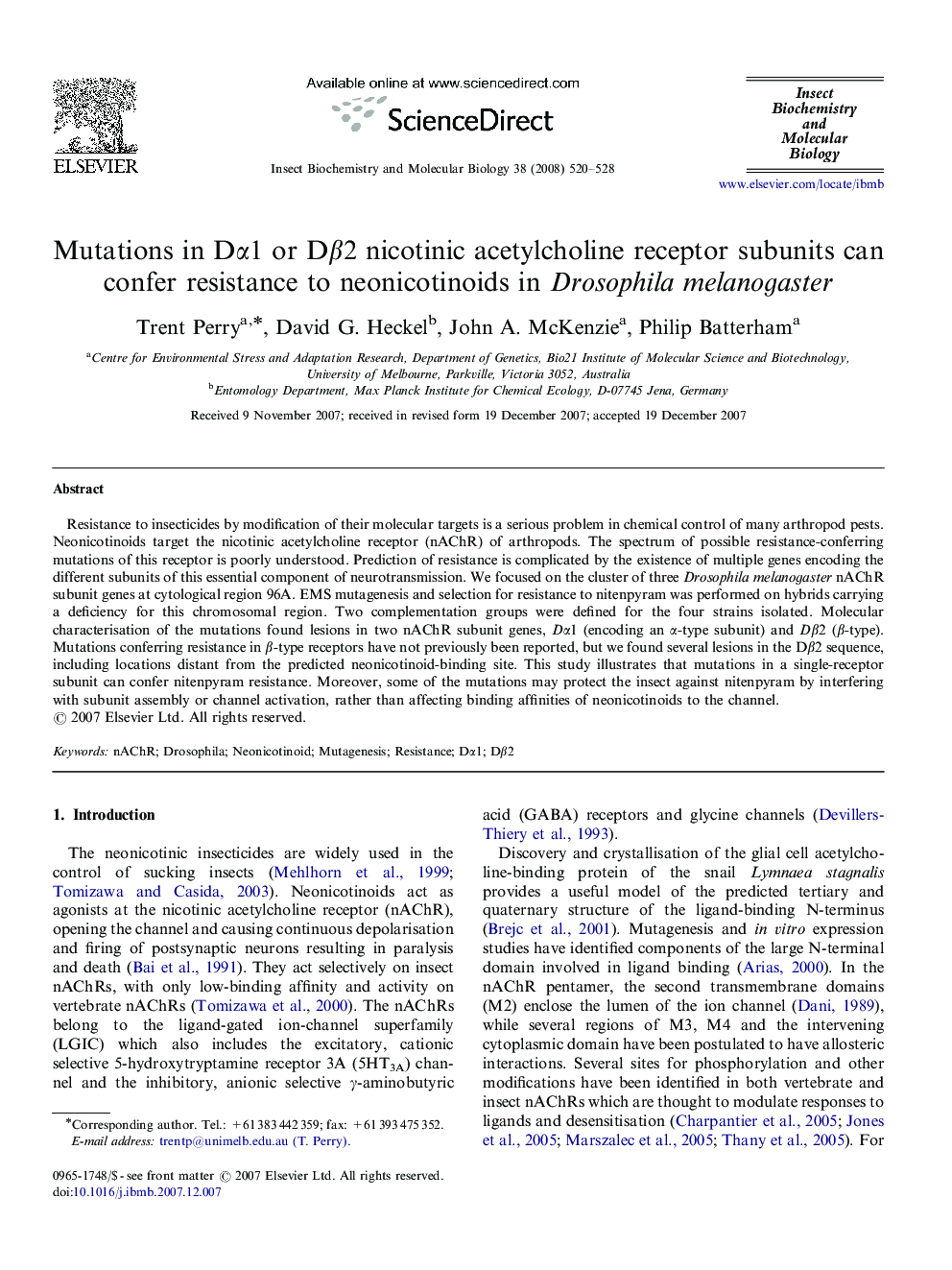| Article ID | Journal | Published Year | Pages | File Type |
|---|---|---|---|---|
| 1982720 | Insect Biochemistry and Molecular Biology | 2008 | 9 Pages |
Resistance to insecticides by modification of their molecular targets is a serious problem in chemical control of many arthropod pests. Neonicotinoids target the nicotinic acetylcholine receptor (nAChR) of arthropods. The spectrum of possible resistance-conferring mutations of this receptor is poorly understood. Prediction of resistance is complicated by the existence of multiple genes encoding the different subunits of this essential component of neurotransmission. We focused on the cluster of three Drosophila melanogaster nAChR subunit genes at cytological region 96A. EMS mutagenesis and selection for resistance to nitenpyram was performed on hybrids carrying a deficiency for this chromosomal region. Two complementation groups were defined for the four strains isolated. Molecular characterisation of the mutations found lesions in two nAChR subunit genes, Dα1 (encoding an α-type subunit) and Dβ2 (β-type). Mutations conferring resistance in β-type receptors have not previously been reported, but we found several lesions in the Dβ2 sequence, including locations distant from the predicted neonicotinoid-binding site. This study illustrates that mutations in a single-receptor subunit can confer nitenpyram resistance. Moreover, some of the mutations may protect the insect against nitenpyram by interfering with subunit assembly or channel activation, rather than affecting binding affinities of neonicotinoids to the channel.
